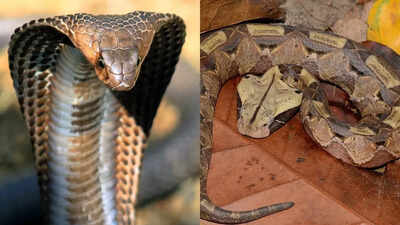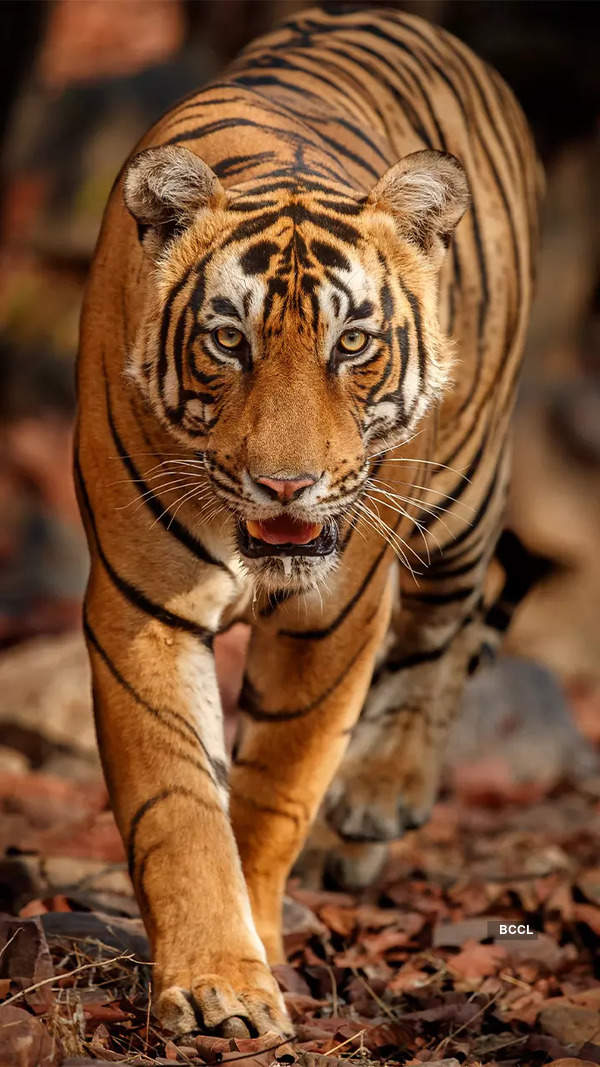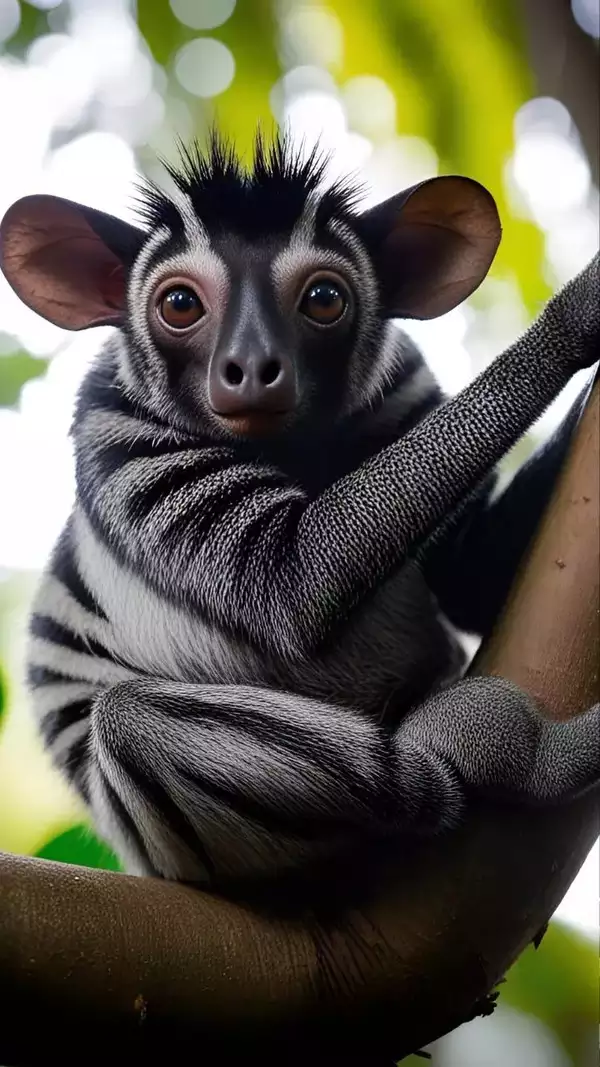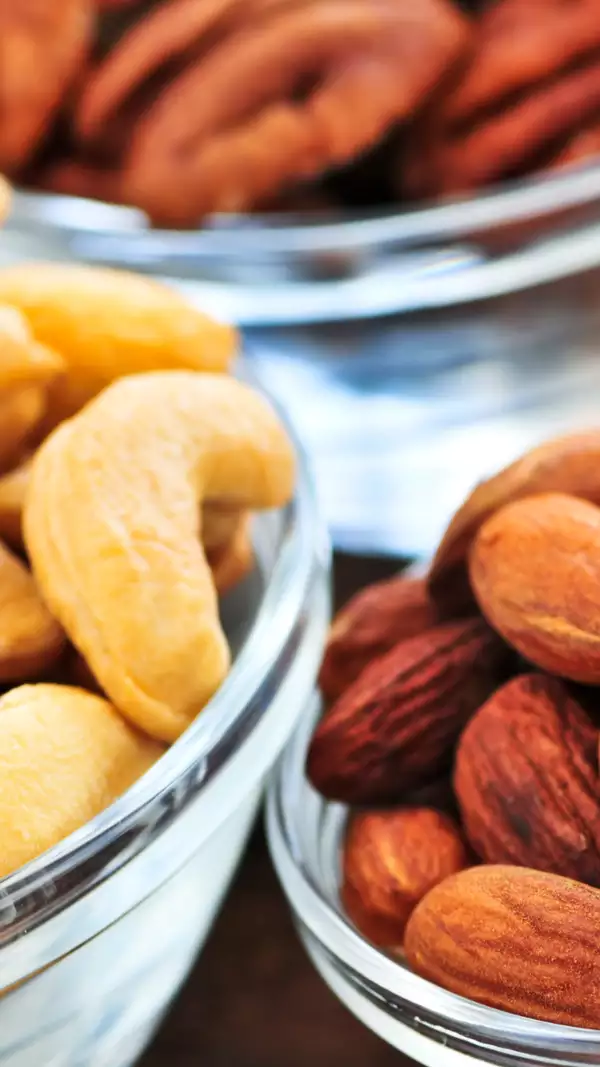Trending
King cobra vs Gaboon viper: Know their key differences on the basis of size, venom, diet and more
The King cobra and Gaboon viper are among the most dangerous snakes, distinguished by their habitats, sizes, and behaviors. The King cobra, native to Southeast Asia, is the longest venomous snake and aggressive, while the Gaboon viper, found in Africa, is known for its stout body and powerful venom. Their unique traits and ecological roles emphasize the importance of conservation.
King cobra and Gaboon viper are two of the most dangerous snakes on earth, and both of them have different characteristics. Both snakes inhabit different parts of the world, but they are similar when it comes to venomous nature but different in every other aspect regarding size, appearance, temperament, and habitat. The Gaboon viper, native to Africa, is known for its stout body and powerful venom, while the King cobra, found in Southeast Asia, holds the title of the longest venomous snake. Explore more about their size, diet, lifespan, hunting tactics, and key differences, shedding light on what makes each species unique, deadly and most dangerous snakes.
Key differences between King cobra and Gaboon viper
King cobra vs Gaboon viper
Size and weight
- King cobra
The King cobra is longer, however, measuring between 12 to 18 feet in length and weighing 11 to 20 pounds. It is quite long but not as heavy as the Gaboon viper because its body is thinner.
- Gaboon viper
The Gaboon viper can average a length of 4 to 7 feet and can weigh between 20 to 45 pounds. It is a heavy and stout snake with an extremely muscular and powerful body, one of the most powerful and muscular snakes around.
Appearance
- King cobra
King cobra has a flat, long, and slender body and neck, which widens into a hood that is very wide. When threatened, the hood is inflated. Its most characteristic feature might be the hood. King cobras are yellow or greenish to dark brown in color, with paler crossbands on their bodies at times.
- Gaboon viper
Gaboon viper have a fat body and leaf-like flat nose and head with horn-shaped, needle-like scales that help to camouflage the snake in the environment, such as forest soil covered by decaying leaves.
The color patterning is multicolored with light brown, dark brown, yellow, and purplish-pink coloration arranged so the snake will be capable of camouflaging itself on decaying leaves and garbage.
Location and habitat
- King cobra
King cobras, on the other hand, are found in Southeastern Asia, from nations like India, Indonesia, and the Philippines. They live in mangrove swamps, bamboo jungles, and the area of agriculture or fresh water. King cobras are arboreal, i.e., they can climb bushes and trees, and also move on land, unlike Gaboon viper.
- Gaboon viper
Gaboon viper live in rainforest and woodland areas of Central, West, and East Africa. Most of its existence is spent on the ground under cover of dense undergrowth and leaf litter, using camouflage to avoid detection by predators as much as prey.
Behaviour and hunting
- King cobra
King cobra is a much more active hunter. It preys on other snakes (even venomous ones), rodents, and birds.
King cobras are also aggressive in fight behavior, where males engage in combat among themselves to fight for females. King cobras will rear up, flare the hood, and hiss very loudly when threatened, showing aggression in order to frighten the potential danger away.
- Gaboon viper
Gaboon viper is not a venomous snake and only bites when threatened or provoked. It ambushes its prey and waits for the best moment to attack, inject venom, and swallow it alive. It has very toxic venom that can injure severely, but the Gaboon viper is not an ambush snake.
Diet
- King cobra
King cobras also eat rodents, though they do not have a uniform diet. They are known to be the only species of snake that will attack and eat other snakes, both venomous and non-venomous. They also eat birds. Like the Gaboon viper, they bite and inject the venom in their prey and then swallow them whole.
- Gaboon viper
Gaboon viper's regular diet consists of small mammals, amphibians, and birds, too, once in a while. It bites and injects venom into its prey, which it paralyses first before swallowing the entire prey whole.
Lifespan
King cobra and Gaboon viper both typically live between 15 and 20 years in the wild. They both live longer when kept in a controlled environment with proper care under captivity.
Behavioural and biological differences
- King cobra
King cobras are more aggressive and territorial. They are the only snakes to dig egg nests for their eggs, which they will fiercely protect.
King cobras are cannibalistic because they will, from time to time, consume other King cobras or family members.
- Gaboon viper
Gaboon vipers are not poisonous on the whole. They are shy and not aggressive unless threatened. As opposed to other snakes, they are viviparous, i.e., they give birth to live young (not eggs) and can have
up to 60 baby snakes per litter.
Fun facts
- King cobra
King cobra is the only snake that builds a nest for its eggs, and they protect the nest until babies are born. King cobras are also cannibalistic, where they consume other King cobras or closely related species, something that does not happen much in the snake world.
- Gaboon viper
Gaboon vipers are also not uncommon in zoo exhibits because of their beautiful appearance and otherwise friendly disposition. Though they kill, they are sometimes tamed as pets but must be treated with care because of their venom.
Both the King cobra and Gaboon viper are fascinating yet deadly snakes, each with unique traits that set them apart. While the King cobra stands out as the longest venomous snake, known for its aggression and ability to hunt other snakes, the Gaboon viper is remarkable for its powerful build, exceptional camouflage, and ambush hunting technique. Their differences in habitat, hunting styles, and behavior highlight the diversity of the snake world. Despite their deadly nature, both species play a crucial role in maintaining ecological balance. Understanding these remarkable reptiles not only deepens our appreciation of wildlife but also emphasizes the importance of their conservation.
Also Read | 10 most popular dog breeds in the USA 2025 including Labrador, German Shepherd, Golden Retriever and others
End of Article
FOLLOW US ON SOCIAL MEDIA
Visual Stories
Tired of too many ads?










